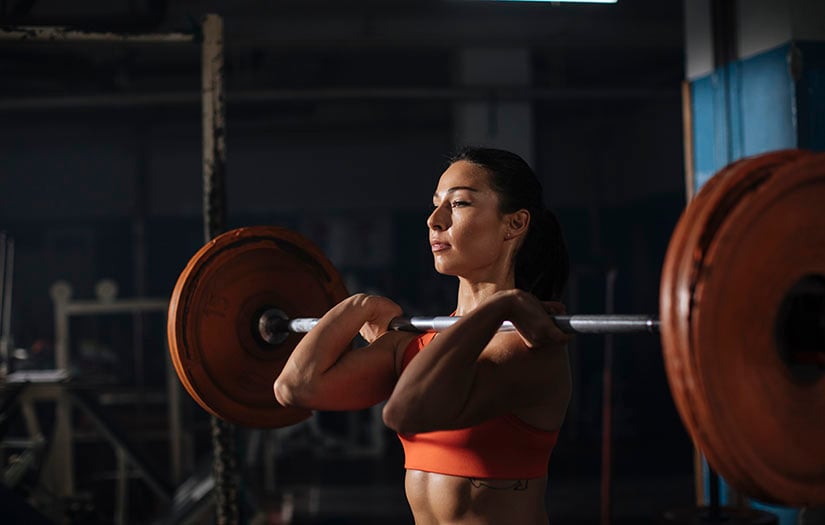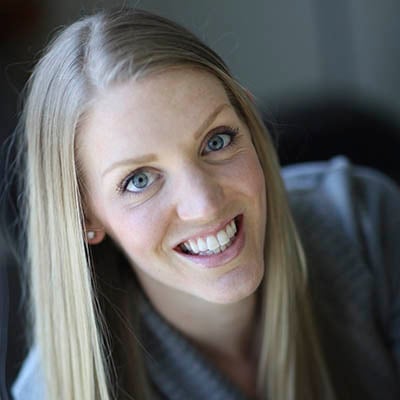Powerlifting isn’t just “for the boys” anymore, and we couldn’t be more excited. Today, it’s more common to see women throwing around some serious weight in sports like CrossFit or in social media posts on the internet. As a result, many women are inspired to give powerlifting a try. Whether you just want to learn more about powerlifting, or you someday aspire to compete, this article will help you understand the basics.
If you are interested in working with female fitness enthusiasts or athletes yourself, NASM has a course for you!
What Exactly is Powerlifting?
Powerlifting is a sport where competitors aim to squat, bench press, and deadlift as much weight as possible in a single rep. Whoever lifts the most weight in their age/weight class wins! It’s pretty simple.
Powerlifters come in all ages, shapes, and sizes, so it is a very inclusive sport to participate in. Competitors are split up into gender, age, and weight classes to level the playing field, so you don’t have to worry that you’ll be pitted against someone twice your size.
Where Should You Start?
Your first question might be, “What does it take to be a powerlifter?” To compete, you will need to be able to squat just below parallel, touch the bar to their chest when benching, and perform a deadlift off of the floor. The minimum weight a competitor needs to be able to lift is the bar plus the collars for squats and bench presses (55 pounds), and 121 pounds for the deadlift (the bar, collars, plus the lightest bumper plates to allow for good form).
One really simple way to begin is by simply watching the sport. You can find a local meet in your area (what a great way to join the community!), or you can watch meets online at powerliftingwatch.com or by looking up videos online.
If you already know that you want to compete or train as a powerlifter, hiring a trainer or coach may be your next step. You’ll also want to find a gym that is set up and allows for powerlifting training, as you will be spending significant time using the bench and squat rack.
Programming Considerations for Females (Is This Different than Male Counterparts?)
Programming considerations for men and women are the same. Powerlifting would fall under Phase 4: Maximum Strength training in the NASM OPT Model. This style of training focuses on lifting 4-6 sets in the 1-5 rep range at 85-100% intensity and is considered an advanced style of training. As such, some important building blocks will need to be put in place to prepare for this intensity of training:
Phase 1: Stabilization Endurance training will help you correct any muscular imbalances that exist, allow you to begin learning good form, and build a strong and stable foundation to prepare for the heavy loads of powerlifting. In this phase, you can expect to lift 1-3 sets of 12-20 repetitions.
See the stabilization endurance basics here.
Phase 2: Strength Endurance training will introduce strength work and build on the muscular endurance that you built in Phase 1. In Phase 2, you can expect to lift 2-4 sets of 8-12 repetitions using strength/stabilization supersets where a strength exercise is paired with a biomechanically similar stabilization exercise.
After 4 weeks in each of those phases, you’ll be ready to start Phase 4 training to increase the amount of weight that you can lift in each of the powerlifting moves.
You may be tempted to skip Phases 1 and 2 for time’s sake, but these phases are essential in preventing injury and mastering each movement so that you’re fully equipped to load on the weight as you get closer to competition (or your lifting goals).
How to Compete?
Even if you begin training for powerlifting just for the strength gains, you might spark a new passion to try the sport! Here are some simple steps to get you ready to compete:
Hire a coach, especially if you’re new to training! If you’re an experienced lifter, you may be able to get away with following a training program that you find online, but if you’re new you will want a trainer’s eyes on you as you perfect your technique and progressively load the movement.
Follow an intentional training plan. You’ll be lifting 3-4 days per week, with a heavy focus on the “big three”- squat, bench press, and deadlift. You’ll also want a program that progresses you systematically toward your max rep goals.
This is where the help of a coach can come in very handy! A general training plan for strength won’t cut it, so find a plan specific to powerlifting to help you build strength and increase your max strength for each of these lifts. It’s important to note that this type of training will require adequate rest. Expect to take at least one day off between training sessions to allow your body to recover.
Find a meet. You can simply google “powerlifting meets in [your state or city]” or by searching for meets on powerliftingwatch.com. You’ll need at least 8-12 weeks to train (depending on where you’re starting), so choose a date far enough out to allow for some solid training time.
Find your community. This is certainly optional, but it’s always more fun to train with others who are headed in the same direction as you. Bonus- you can challenge one another to reach your goals and cheer one another on at competition!
What Are Some Big Lifts to Focus on as a Female Powerlifter?
It’s necessary for all competing powerlifters, men and women, to master the technique for the “big three” fundamental lifts: squats, bench presses, and deadlifts.
If you are interested in doing powerlifting to simply increase your strength, not for competition, it’s completely acceptable to also include other variations of these movements to support your strength goal, in addition to some upper body pulling movements (like rows, lat pulldowns, pull-ups, etc.) to round out your program a little bit.
Be sure to check out the NASM equipment library if you're interested in perusing the best weightlifting equipment - like deadlifting shoes!
Diet Considerations for Powerlifters
Cutting calories and powerlifting do not mix well! It’s vital to fuel your activity as you aim to increase your maximum strength for powerlifting. Where bodybuilding requires very specific macros and tracking to meet physique goals (often cutting calories), nutrition for powerlifting can be a little bit less stringent but is equally important.
You can use an RMR calculator to calculate how many calories you need to fuel your movement. This can help ensure that you are not under-eating as you train. If you notice that your progress stalls out or that your energy is lacking, it might be time to up your calories or adjust your meal schedule to help you improve your performance.
Powerlifting athletes will want to eat enough of each of the following macronutrients, including plenty of non-starchy vegetables in the mix:
• Carbohydrates (40-65% of calories): Starchy vegetables, fruits like apples and bananas, whole grains, whole grain pasta, rice
• Protein (20-30% of calories): Ground turkey, chicken breast, lean ground beef, lean cuts of pork
• Fats (Remaining calories): nuts, seeds, nut butter, avocado, olive oil, salad dressings
• Choose the amounts of each macronutrient that give you the best energy and performance.
This is a sport that almost anyone can participate in if you’re willing to put in the time to train. If you’ve been curious about powerlifting and want to give it a try, go for it! Even if you never plan to compete, your body will still benefit from increasing your strength with powerlifting.

















